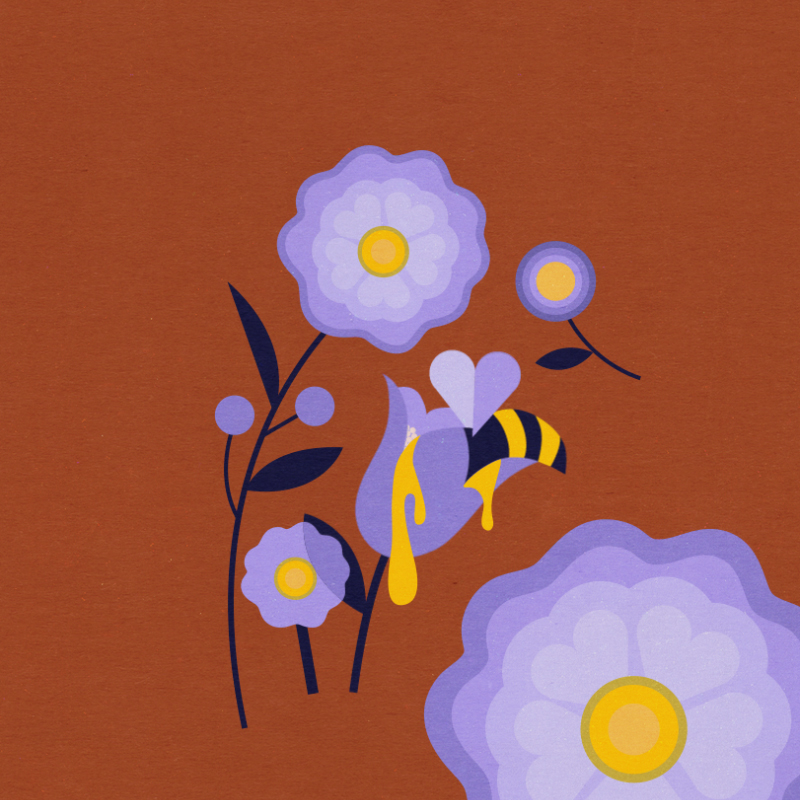The Most Useful Lithuanian Insect, or What Do Bees and Companions Have in Common?
> BACK TO 100 STORIESListen to this text (Lithuanian):
It is safe to say that the most useful insect in Lithuania is the bee. Beekeeping – raising bees to extract honey and other products – is a very old branch of farming. There are also many beliefs and superstitions associated with bees. The bee has an important place in Lithuanian folklore, poetry and prose: the image of the bee in literature has a symbolic, or figurative, meaning: bees are associated with the harmony of the nation and family, close friendship, and spiritual life.
What gave bees such a special significance in Lithuanian culture? Bees are important to humans because they produce honey from sweet nectar, which they collect from flowering plants. Bees also increase plant fertility by transferring pollen from one plant to another. The bees need honey to survive the winter – bee families eat honey when they cannot get nectar from flowering plants. Beekeepers “borrow” some of the honey collected by bees during the summer and instead feed them sugar syrup during the winter. People also get bee bread, beeswax, propolis, and royal jelly from bees. These products are used for food, household tasks, and medicine.
Bees symbolise harmony, friendship and diligence due to their special way of living. The bee colony consists of the mother bee, who lays eggs, thousands of worker bees, who do all the work in the hive, and several hundred drones who fertilise the young mothers. In order for a bee family to survive, each member of the family must do their job.
Log hive beekeeping flourished in Lithuania for many years, especially in the sixteenth and seventeenth centuries. Honey and beeswax were one of the most important products in the Grand Duchy of Lithuania (GDL). Lithuanians began keeping bees in tree cavities or logs around the thirteenth century. Until then, people hunted for honey – when they found a tree with bees in its cavity, they cut down the tree and harvested the honey. The first beekeepers did not care about the fate of the bees – after cutting down a tree, the bees had to look for new homes. It is quite different today – beekeepers take care of bees living in hives all year round. Frame hives became widespread at the end of the nineteenth and the beginning of the twentieth century. These are tiny wooden houses with a narrow opening for bees to enter and carry honey.
In the past, bees were considered sacred, so they couldn’t be bought or sold, only gifted. The person who gave bees and the one who received them would become friends. These friends helped each other take care of the bees and shared the honey. It was also important that the bees were shared by very different people – lords and peasants, rich and poor. Therefore, the words bičiulis [Eng. companion] and bičiulystė [Eng. compship] have become synonymous with draugas [Eng. friend], draugystė [Eng. friendship] – words that sound different, but have the same meaning. Beekeepers are also highly respected these days.
Bees are associated with the afterlife in Lithuanian mythology and ancient beliefs. It was thought that bees could predict death: if the owner or any of his family members were threatened with death, the bees would make a honeycomb cross or a coffin. Because of their ability to fly, bees were associated with the celestial world and even considered a symbol of the human soul.
Sadly, today the number of beekeepers in Lithuania is decreasing: it is difficult for young people who travel a lot to engage in beekeeping, because beehives need to be taken care of all year round.

